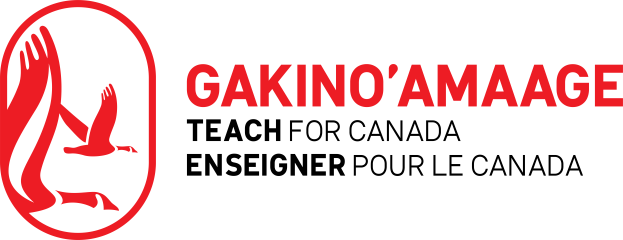With many children spending more time at home across the country, we asked Teach For Canada’s team of experienced northern educators to share their favourite activities that can easily be done with family. From making art to spending time in the outdoors together – there are a lot of ways you can spend meaningful time with your children while practicing social distancing. Read on for some great ideas and inspiration!

Five Teacher Development Managers share their favourite activities do with kids at home.
Get Outside! – Karissa Frey, Teacher Development Manager
While many of us are feeling the effects of being cooped up inside, I love to find ways to get outdoors while still staying safe and practicing social distancing. There are so many different ways that you can take advantage of the warming weather and natural environment during this season.
Outdoor Art
Encourage your child to explore their natural environment by creating a piece of art using only natural materials. You can take a walk or even look in your backyard for anything that could be made to create a piece. This could be a sculpture, a picture – anything at all really! The only rule is that you must not disturb any living things. After the piece has been created, have your child tell you about the process they used to create it – and see if there may be a story to accompany it.
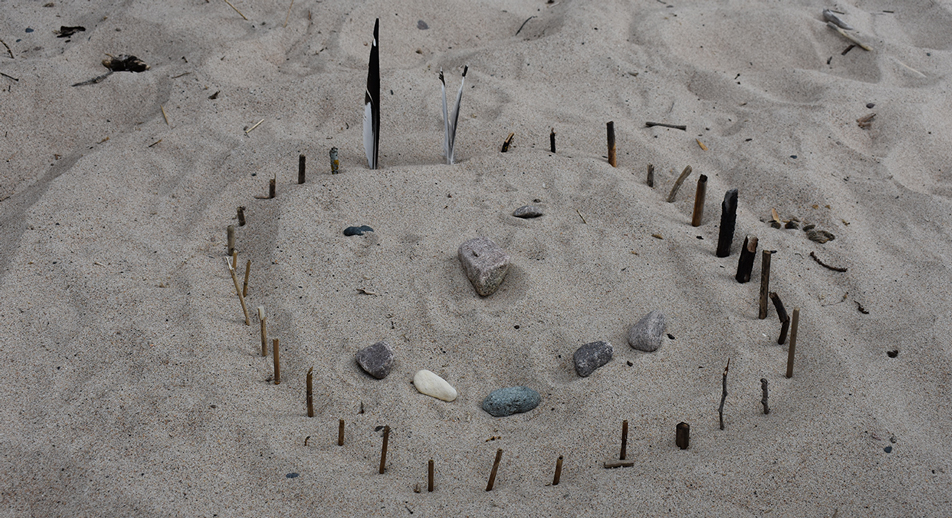
This is an example of outdoor art using items you can find in the natural environment.
Scavenger Hunt
Another great outdoor activity is a simple scavenger hunt. You can do it with photos, drawings, or any other creative way you want! Create a list of things for your child to find, and then take a walk to see which of the items you can spot. Some ideas include:
– A tree taller than yourself
– Something rough
– Something purple
– Something wet
– Something that’s fallen from a tree
– Something tiny
– Something huge
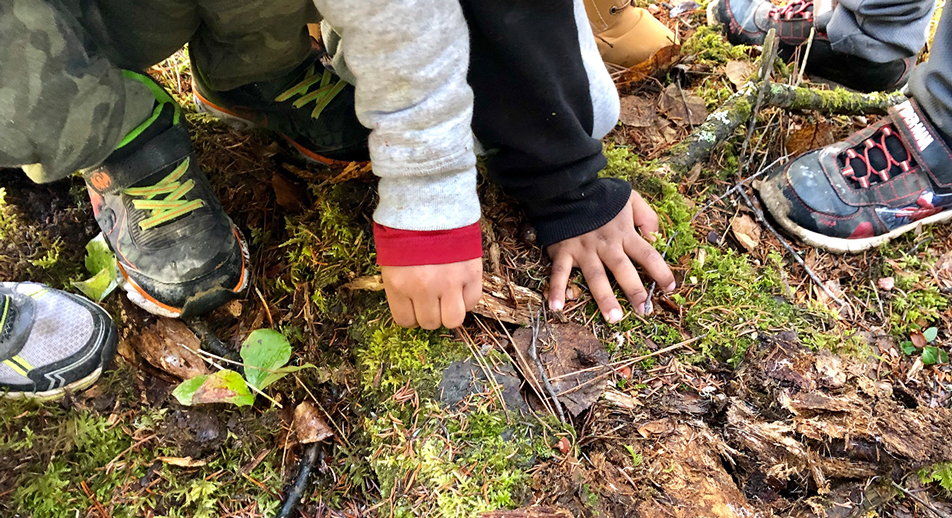
Scavenger hunts can be done in your own backyard or on a walk down your sidewalk.
Feel free to create your own, or use one of the many premade hunts you can find online. I like this one from Buggy and Buddy for younger children, and this one from Love the Outdoors for older children, or if you are in a more rural area. No matter what activity you do, providing any opportunities for outdoor free play can have positive effects and be a great way to spend time as a family!
Spend Time Together Enjoying Books! – Nicole Nuk, Director of Teacher Development
One of the most important ways you can use this extra time at home with your kids is by spending time together. Yes, there can always be academic goals to focus on. Yes, there are always chores around the house you could get your kids to tackle. But spending time together without specific goals in mind will be the moments you, and your kids, will remember most vividly from this unique time in our lives.
So… try reading together!
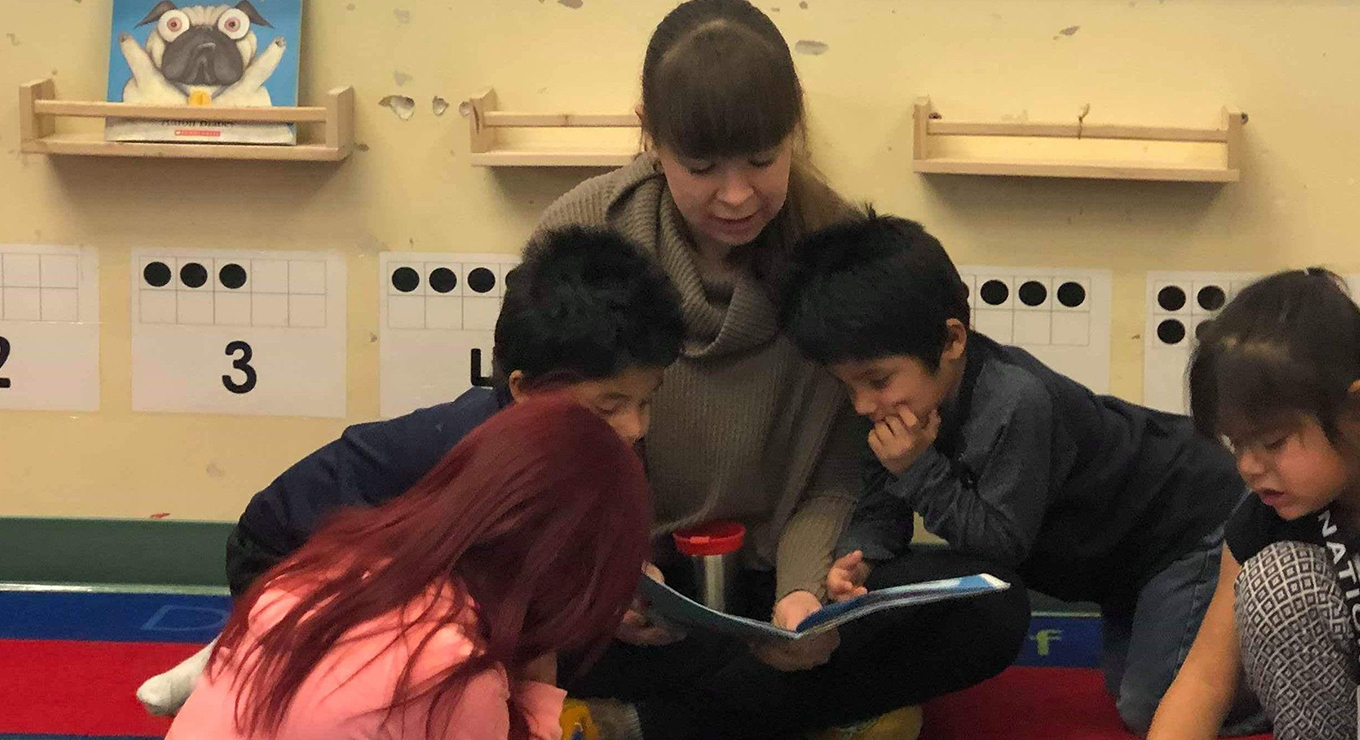
There are a lot of online resources to find books to suit your child’s reading level.
You can read to your child:
If you have books around the house that is the best place to start! If you are looking to add to your library, try a small independent book store like Goodminds where you’ll find First Nations, Metis and Inuit culturally appropriate educational resources and products.
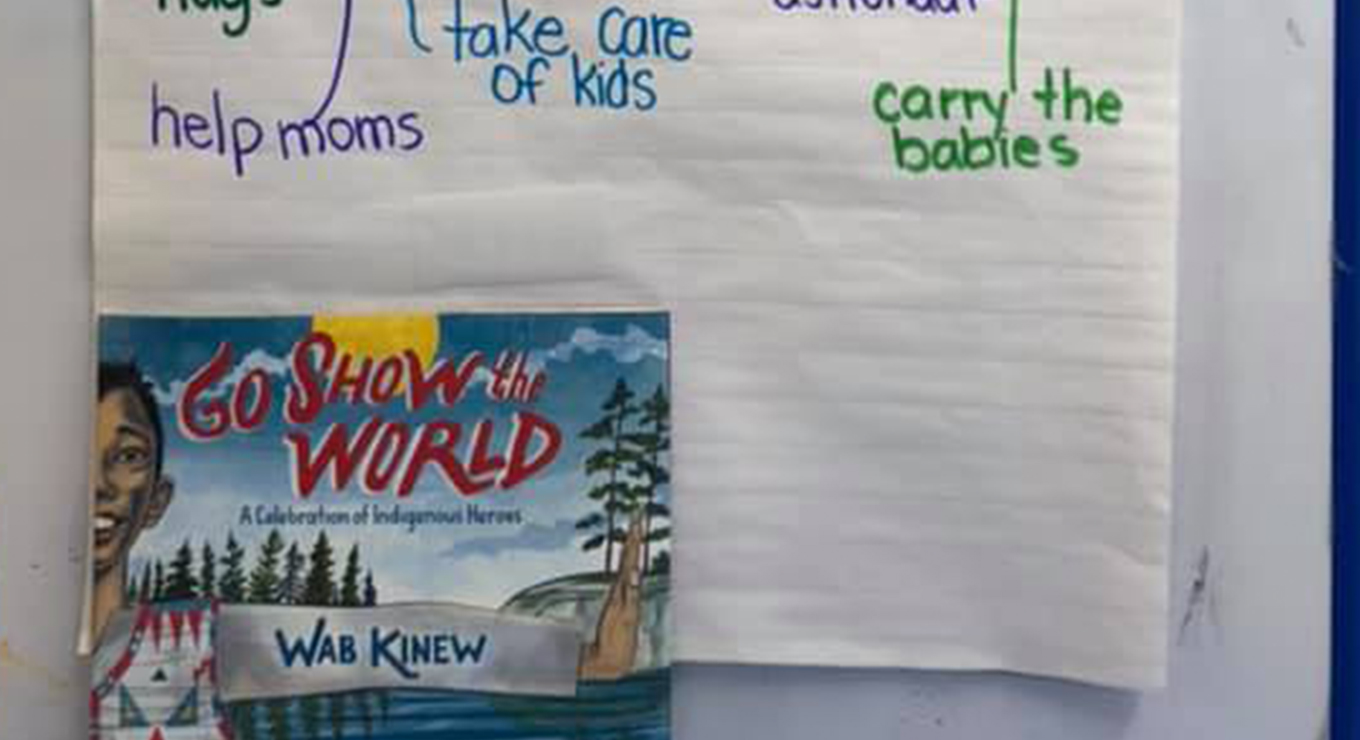
You can find First Nations, Metis and Inuit culturally appropriate educational resources.
Your child can read to you:
There are many online book libraries that are full of titles to engage your young reader. Raz-Kids provides levelled books to suit your child’s reading level and is offering free access during school closures. Epic! is an extensive online book catalogue with lots of popular titles and interesting topics. If you’d like to add some more depth to your time reading with your kids, try ReadWorks – a vast online reading library that also has a reading comprehension focus. Scholastic has also put out some great daily reading-focused activities to take your reading time to the next level.
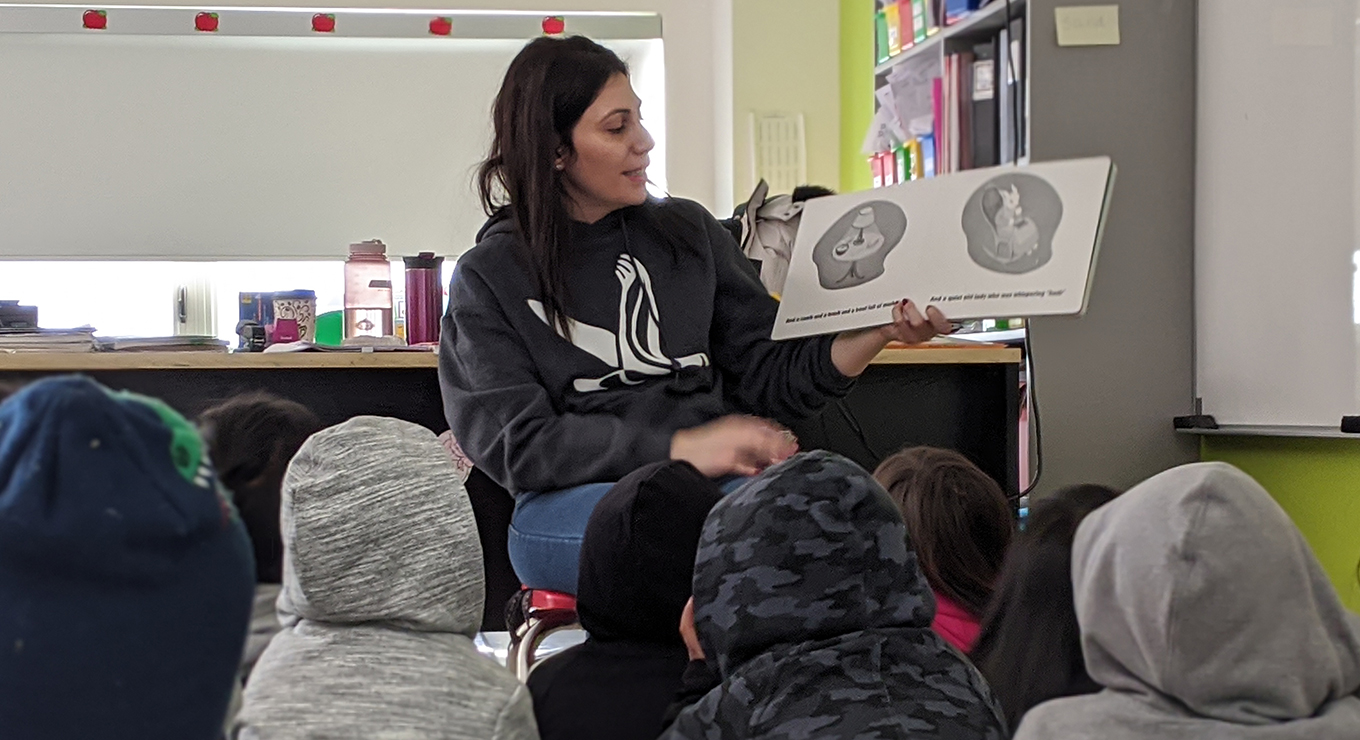
You don’t always have to do the reading. Listening to someone else read is a relaxing way to keep books alive!
You can listen to someone else read aloud:
If you need an extra break, listening to someone else read is a relaxing way to keep books alive in your house. Audible, a collection of online audiobooks, has made a promise to wave their subscription fee as long as schools are closed. Storyline Online has a great video collection of celebrated actors reading engaging books. For more information on how to make the most of this time with your kids check out Why it’s important to read aloud with your kids, and how to make it count. Happy reading!
Guided Drawing: Easy, Flexible, Fun! – Nicole Journal, Teacher Development Manager
One activity I’ve been really enjoying over the past few weeks is guided drawing. I’ve never been particularly artistic and we don’t keep lots of art supplies around the house, but with self-isolation looming, screen time expanding, and boredom creeping in, I decided it was time to get creative. That’s when I stumbled across the idea of guided drawing. Basically, you watch a short video of a professional illustrator drawing a picture step by step, and you follow along doing what they do.
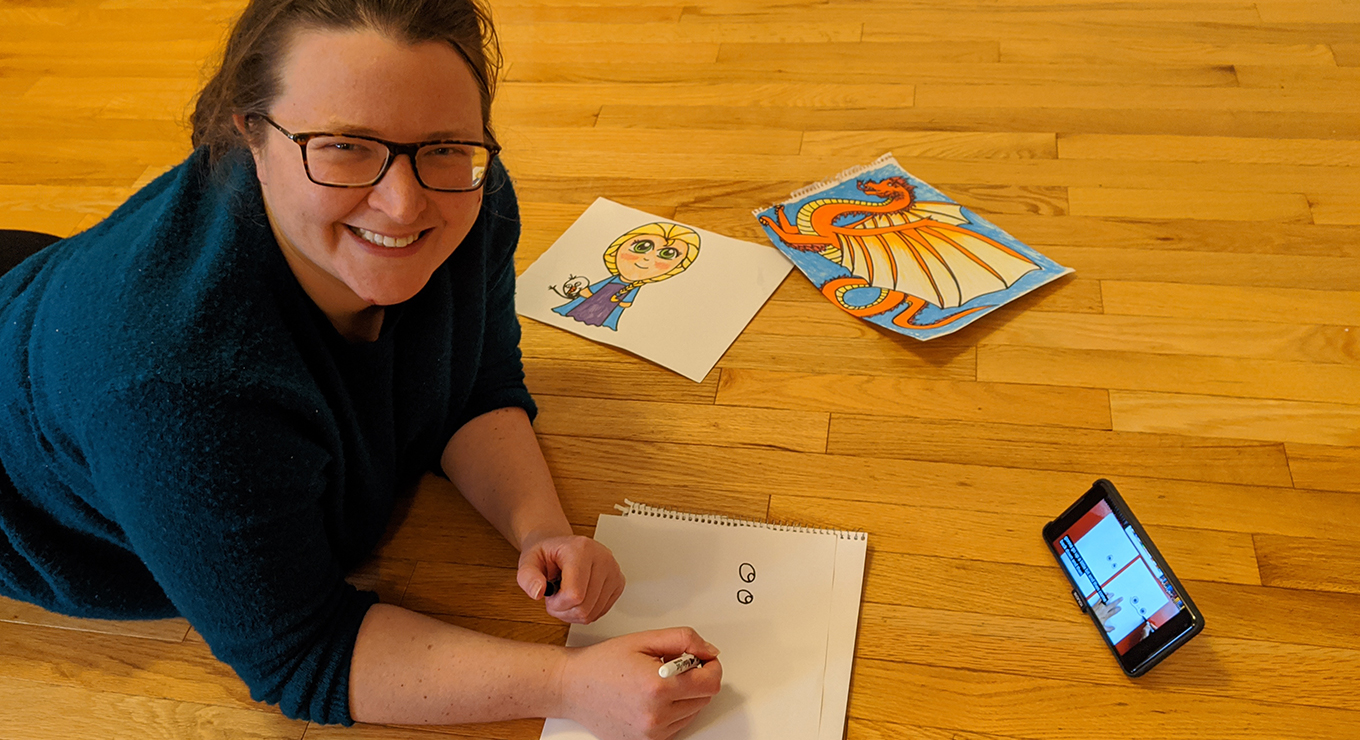
Nicole has been using online resources to guide her drawing.
It’s super easy, requiring no planning and minimal supplies. All you need is paper, something to draw with, colours, and a screen that connects to YouTube. It’s also very flexible. I’ve been enjoying drawing by myself and with my partner. Similarly, kids can easily draw solo, work together in small groups, with a parent, or try drawing with the whole family!
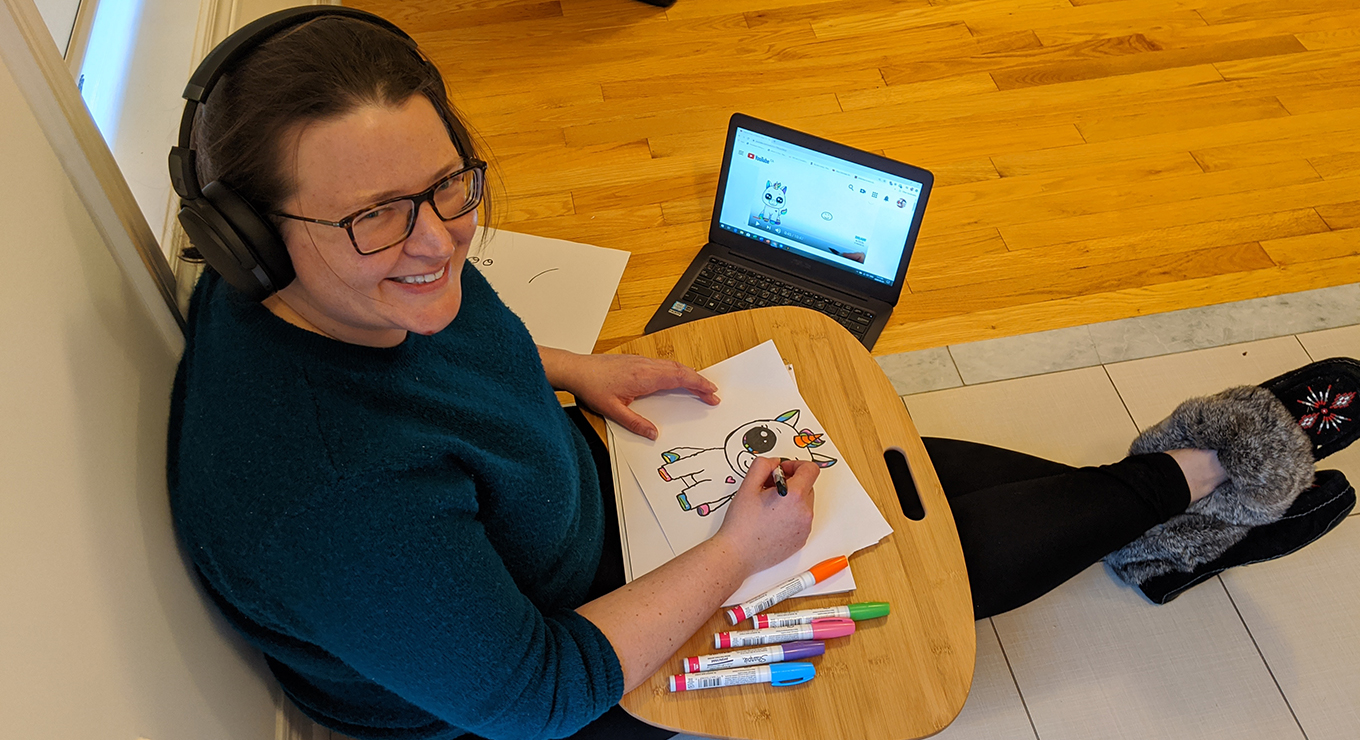
You can find videos with different difficulty levels and styles.
There are tons of great videos online with all sorts of different difficulty levels, styles, and things to draw. My favourite so far are by Art Hub For Kids. They have an amateur artist (often a kid) draw alongside the professional illustrator. Plus the instructions are very clear and kid-friendly. I also highly recommend Lunch Doodle with Mo Willems. He’s the author of lots of awesome and very funny picture books like, “Don’t Let The Pigeon Drive the Bus!” and “We Are in a Book!” and helps kids recreate his most popular characters.
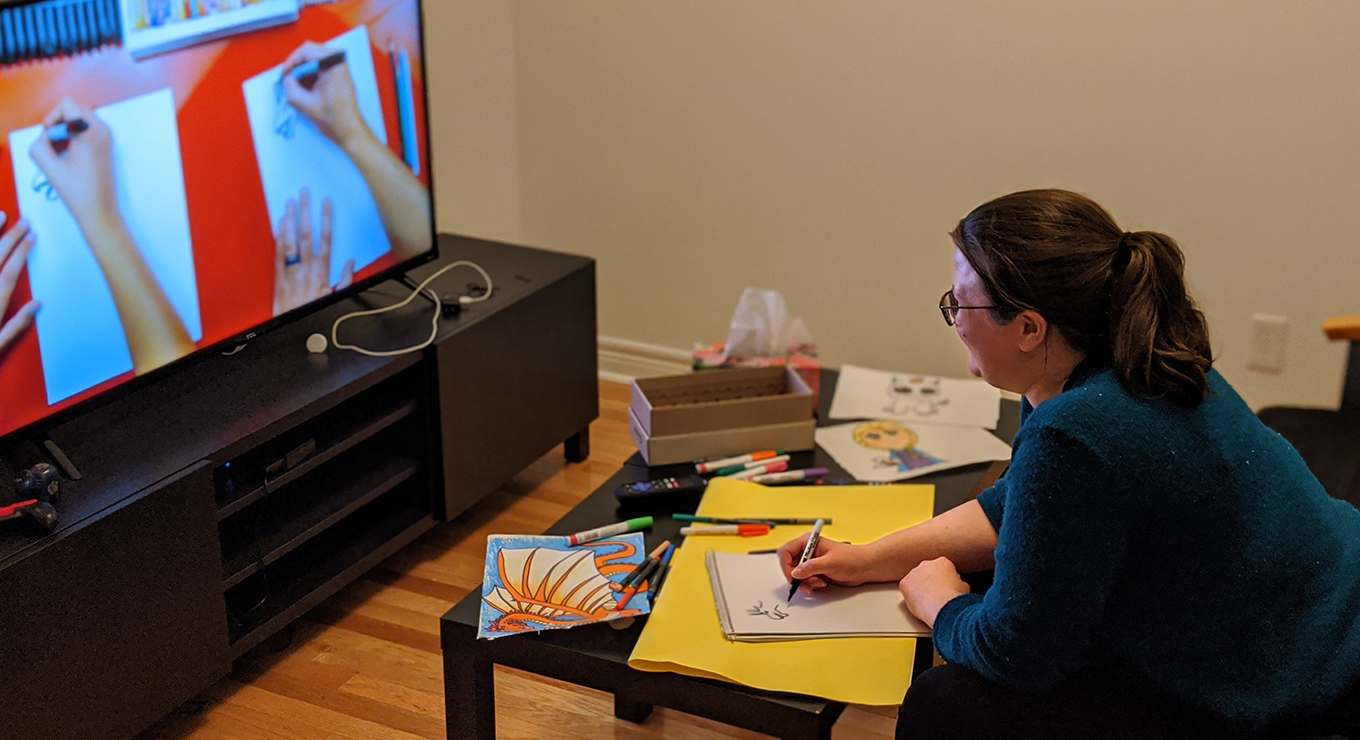
Nicole finds drawing grounding and has seen her drawing skills improve.
The number one reason to try guided drawing is that it’s really fun. I’ve started doing a guided drawing every day because, for a half-hour, while I draw, I forget about everything but the picture on the page. I’m totally engrossed, engaged, and focused. And I’m actually getting better at drawing. Kids, if they are anything like me, will emerge from this activity a little more grounded, a little less stressed, and with a picture they can be proud of. So get guided drawing and add some art to your day!
Dance Movement! – Anikka Bolender, Teacher Development Manager
What do Tom Cruise, the Jonas Brothers, and the Wiggles all have in common? Dancing in the living room! I am by no means a “good dancer” – I wouldn’t even call myself mediocre. Yet, when certain songs come on I can’t help but find myself bopping along to the tune and eventually breaking out into full-on dancing.
My previous students can also attest to my love of dancing. Dancing in the classroom, taking turns having students lead our group in a favourite dance move became a very popular end of the day or brain-break activity. Not only was dancing a great way to promote physical activity but it built community and trust in the classroom — getting silly and showing off that new dance move was encouraged!
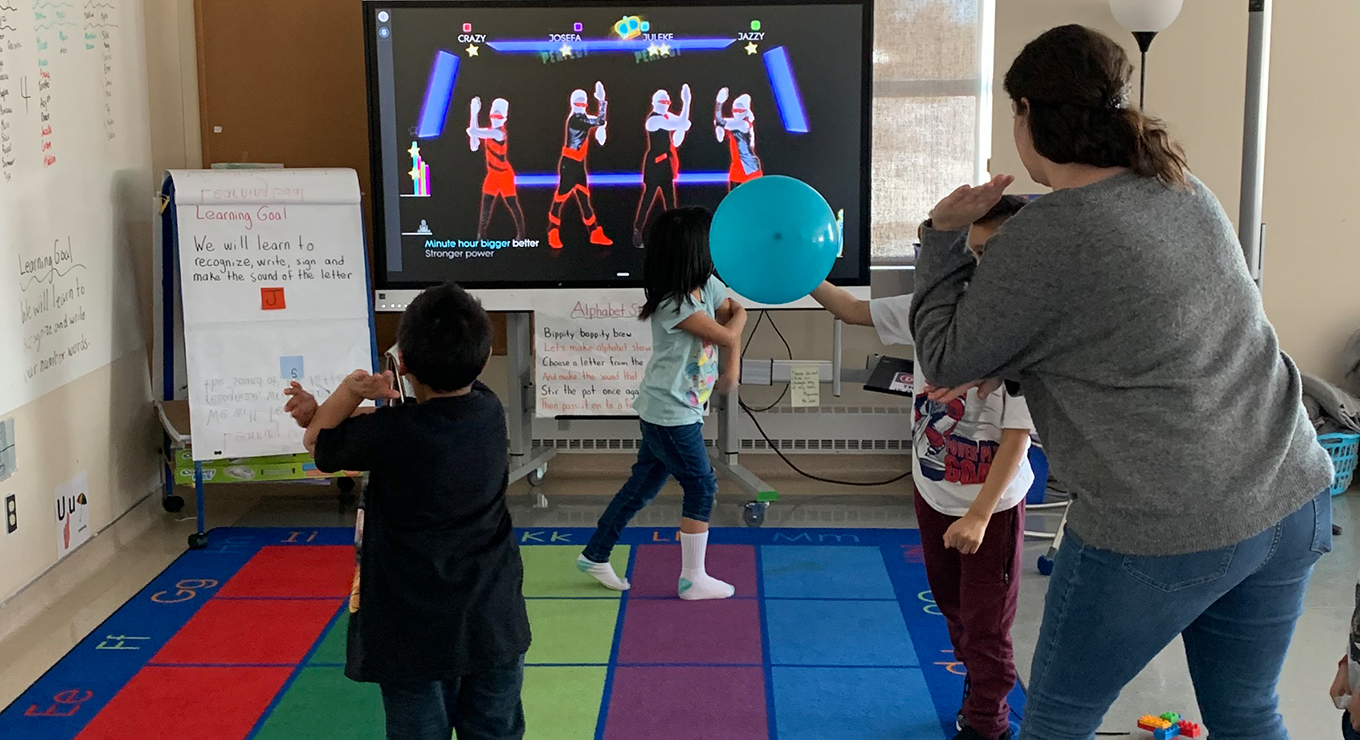
Dancing can be a good body and brain break!
In the last few weeks, dancing in my kitchen and living room has been a fun, energizing break during my workday! Not only has bouncing around the room, often accompanied by my cat, given me a much needed break from staring at a screen but also made me laugh and brought a smile to my face. The Just Dance channel on Youtube has been my go-to for music and the videos have dance moves you can follow along to. Kidz Bop has very kid-friendly music and instructional videos that break down their dances into easy to follow steps. Both are great resources to get you and your family dancing!
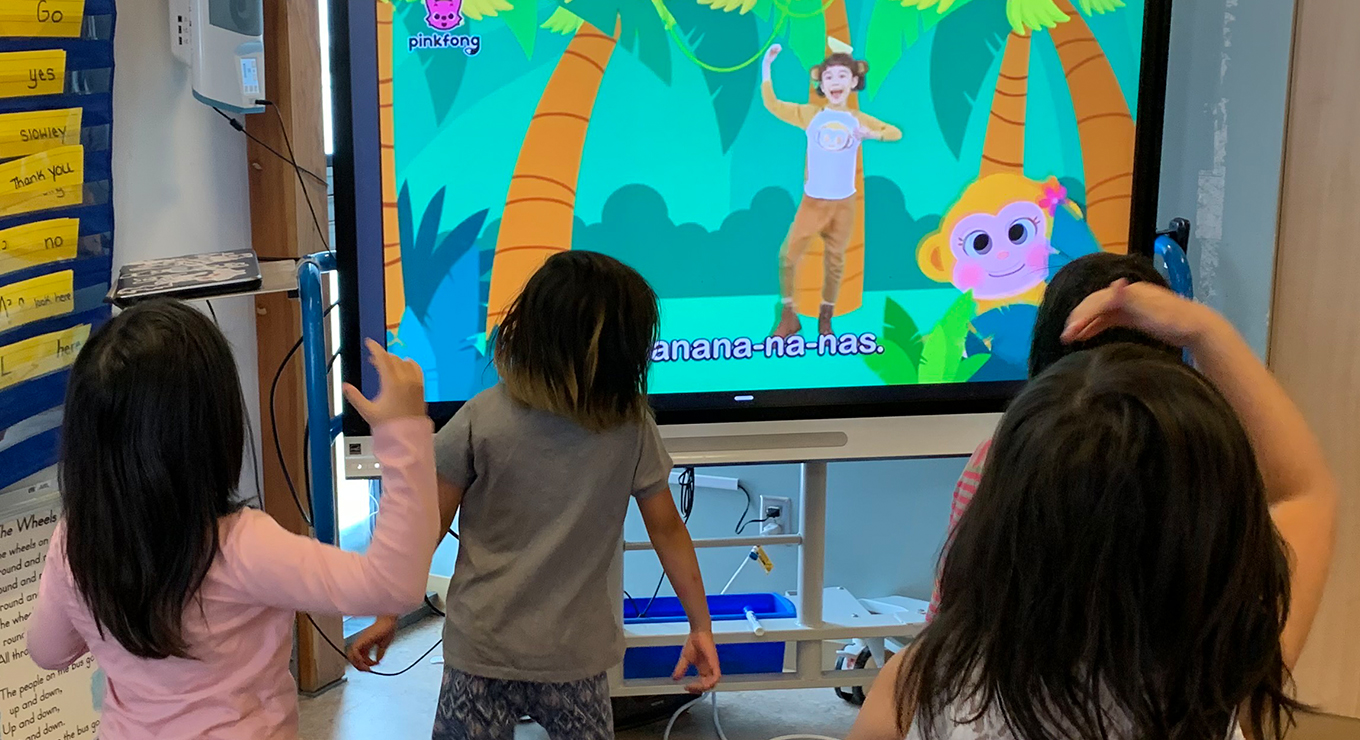
You can find instructional videos online that break down their dances into easy steps to follow.
Dancing is an everyone activity, it’s universal, and it’s found all around the world! Try exploring the world with your family through dance and music! Interested in learning about First Nations dance styles? Keep a lookout for videos of jingle dancers dancing on their front porches to share healing and joy, like this one. The website All Around This World has a huge bank of resources that explore world cultures and music. Learn about the Haka, the traditional dance of the Maori people of what is now New Zealand, check out the link found here. Or try learning the Latin style dance of Salsa in a Five(Ish) Minute Dance Lesson video produced by John F. Kennedy Center for the Performing Arts. Take a few minutes and dance today, I guarantee it will leave a smile on your face!
Write What You See – Dan MacDonald, Teacher Development Manager
Writing confidently can be a challenge for some students, and the best way to overcome that challenge is to work on it and practice writing skills. Descriptive writing is a great way to move away from surface-level writing and move into deeper, more engaging writing. This will help students who want to improve their writing ability and will really come in useful when they are writing essays because it trains them to look deeper and think about what they’re saying.

These are a series of photos Dan has used in ‘Write What You See” activities.
One of the easiest ways to practice descriptive writing includes two of my favourite things: spending time outside and reflecting. Spending time outside has its own rewards and can help kids ground and calm themselves. Reflecting on how you feel and what you’re thinking also has rewards—particularly by helping kids increase their emotional literacy (being able to talk and think about how they feel and what is making them feel that way). Reflection and emotional literacy are life skills that help academically, but also help kids grow their ability to be thoughtful.

In this exercise, you write about what you see, hear, feel, smell, and think.
Here’s how it works:
- Grab some paper and a pencil or a pen
- Go outside and get comfortable!
- Write about what you see, hear, feel, smell, and think
- Use sentence starters to get going
- I can smell…
- I can hear…
- It sounds like…
- I see…
- This makes me feel…
- It reminds me of…
- When I see _______ it makes me think…
- Share what you wrote with an adult or another child and discuss

There are no wrong answers in descriptive writing.
The nice thing about this kind of work is that there are no stakes. By that, I mean that the kids can grow their confidence since there are no wrong answers. As a parent, guardian, or teacher, it is really valuable to praise the child that is working on their descriptive writing.

You can help encourage your children by praising their descriptive writing and prompting with more questions.
You might be wondering: “How can I help my child improve their descriptive writing?” This is also really simple! Just praise their observations and willingness to try this activity. Then ask questions to see if they can go deeper in their writing. Some questions might include the following:
- What else do you hear? What else do you see? What else do you feel or think?
- Does this sound/smell/sight make you think of anything else?
- What is the first thing that you noticed when you came outside?
- Do you feel better or worse when you’re outside?
- Can you write one sentence that includes something you see and something you hear?
Here’s an example of descriptive writing. You can’t go wrong if you ask any questions, but the ones above are a good starting point if you aren’t sure what to ask. This kind of activity is really simple and has a lot of rewards. Give it a try!


